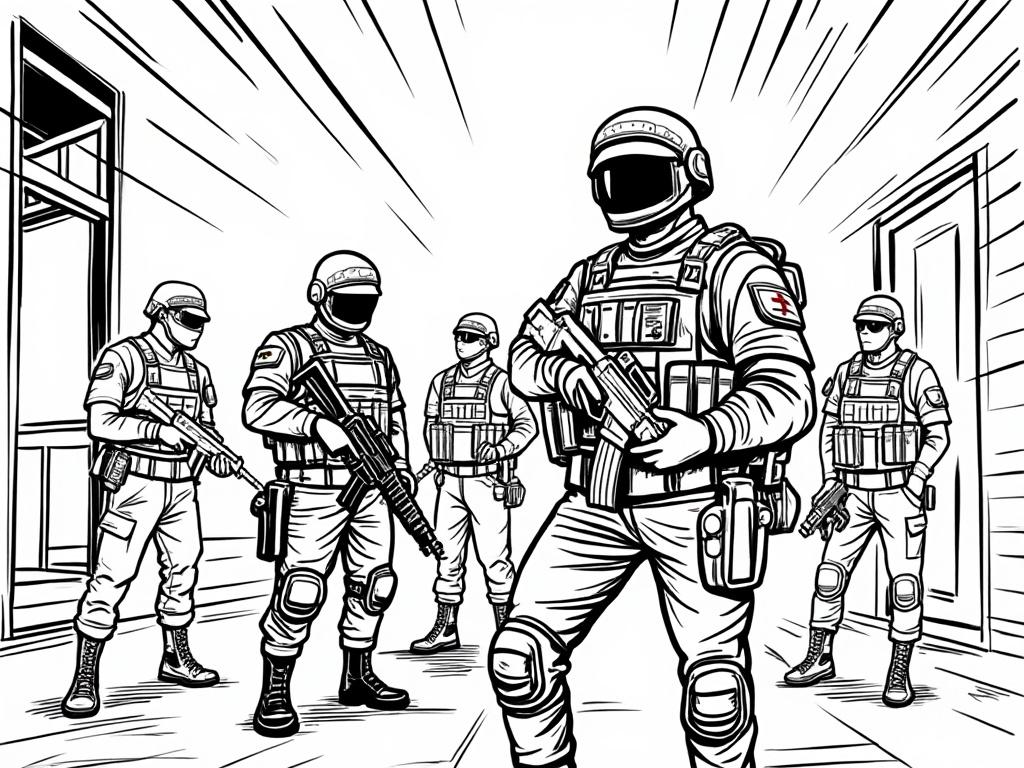
Greece’s Defense Arsenal: Modern Military Capabilities and Strategic Position in the Eastern Mediterranean
Reading time: 12 minutes
Table of Contents
- Strategic Defense Overview
- Armed Forces Structure
- Military Equipment and Technology
- Modern Defense Challenges
- International Partnerships
- Strategic Defense Roadmap
- Frequently Asked Questions
Strategic Defense Overview
Ever wondered how a nation of 10.7 million people maintains one of Europe’s most formidable military forces? Greece’s defense capabilities represent a fascinating case study in strategic positioning, technological adaptation, and geopolitical necessity.
Here’s the straight talk: Greece operates the world’s 25th largest military by active personnel, spending approximately 3.8% of its GDP on defense—the highest percentage among NATO allies. This isn’t just about numbers; it’s about maintaining strategic balance in one of the world’s most volatile regions.
Geographic Imperatives
Greece’s unique position creates both opportunities and challenges. With over 6,000 islands scattered across the Aegean and Ionian seas, plus a 1,180-kilometer land border with Albania, North Macedonia, Bulgaria, and Turkey, the country faces complex defense requirements that few nations can match.
Quick Scenario: Imagine coordinating naval patrols across thousands of islands while simultaneously monitoring air space that borders both NATO allies and potential adversaries. This is Greece’s daily reality, requiring sophisticated multi-domain capabilities.
Armed Forces Structure
The Hellenic Armed Forces operate through three distinct branches, each tailored to Greece’s specific geographic and strategic needs:
Hellenic Army
With approximately 100,000 active personnel, the Greek Army represents the largest component of the nation’s defense forces. The service maintains a mixed structure of professional soldiers and conscripts, reflecting both modern military trends and traditional Greek military culture.
Key Army Capabilities:
- 4 Military Commands covering strategic regions
- Specialized mountain warfare units (essential for Greek terrain)
- Advanced mechanized infantry divisions
- Elite special forces (1st Paratroop Regiment)
Hellenic Navy
Perhaps Greece’s most critical military branch given its maritime geography, the Navy operates with approximately 16,000 active personnel and maintains one of the Mediterranean’s most capable fleets.
The fleet includes 13 frigates, 11 submarines, and numerous patrol vessels specifically designed for Aegean operations. Here’s what makes this impressive: Greece operates more submarines per capita than any other NATO member, reflecting the strategic importance of underwater warfare in the Eastern Mediterranean.
Hellenic Air Force
With around 26,000 personnel, the Air Force operates approximately 600 aircraft, including some of Europe’s most advanced fighter jets. The service maintains seven major air bases strategically positioned to cover Greek airspace and project power across the region.
Military Spending Comparison (% of GDP)
3.8%
3.4%
2.6%
2.0%
1.4%
Military Equipment and Technology
Naval Capabilities: Submarine Excellence
Greece operates a particularly impressive submarine fleet, including German-built Type 214 submarines equipped with advanced air-independent propulsion systems. These vessels can remain submerged for weeks, providing significant strategic deterrent capabilities in the Eastern Mediterranean.
Case Study – Operation Poseidon: During the 2020 Eastern Mediterranean tensions, Greek submarines successfully tracked foreign naval movements for over 45 consecutive days, demonstrating exceptional operational endurance and strategic intelligence gathering capabilities.
Air Power Modernization
The Hellenic Air Force operates an impressive mix of aircraft, including:
- Dassault Rafale fighters – 24 aircraft with advanced multi-role capabilities
- F-16 Fighting Falcons – Over 150 aircraft in various configurations
- Mirage 2000 series – Approximately 50 aircraft providing air superiority
The recent acquisition of French Rafale jets represents a significant capability upgrade, providing Greece with some of Europe’s most advanced air-to-air and air-to-ground systems.
Ground Forces Equipment
| Equipment Category | Primary Systems | Quantity | Operational Status |
|---|---|---|---|
| Main Battle Tanks | Leopard 2A6, M1A1 Abrams | 400+ | Active/Upgraded |
| Artillery Systems | PzH 2000, M109A5 | 500+ | Modernized |
| Air Defense | Patriot, S-300PMU1 | Multiple Systems | Integrated Network |
| Infantry Fighting Vehicles | BMP-1, M113A1 | 2,500+ | Mixed Condition |
| Anti-Tank Systems | MILAN, TOW, Spike | Classified | Modern/Effective |
Modern Defense Challenges
Budget Constraints vs. Strategic Needs
Despite high defense spending as a percentage of GDP, Greece faces the challenge of maintaining extensive capabilities with limited absolute resources. The country’s defense budget of approximately €5.5 billion must cover personnel costs, equipment maintenance, and modernization programs simultaneously.
Practical Challenge: How do you modernize a military while maintaining operational readiness across multiple domains? Greece’s approach involves strategic partnerships, phased equipment upgrades, and focusing on high-impact, multi-role systems.
Geographic Complexity
Defending thousands of islands creates unique logistical and operational challenges. Unlike continental European nations, Greece must maintain rapid response capabilities across vast maritime distances while ensuring adequate coverage of critical sea lanes.
Consider this scenario: A single incident in the Aegean could require coordinated responses from naval vessels, air assets, and special forces—all operating from different bases and requiring complex coordination.
Technology Integration
Greece operates equipment from multiple international suppliers, creating interoperability challenges. American F-16s must work alongside French Rafales, German submarines, and Israeli air defense systems—requiring sophisticated command and control integration.
International Partnerships and Defense Cooperation
NATO Integration
As a founding NATO member since 1952, Greece contributes significantly to alliance capabilities. The country hosts important NATO installations and participates actively in collective defense operations, contributing forces to missions in Afghanistan, Kosovo, and the Mediterranean.
Strategic Partnership Example: The 2021 Greece-France Strategic Partnership demonstrates how smaller nations can leverage bilateral relationships to enhance defensive capabilities. This agreement includes mutual defense clauses and coordinated equipment procurement, effectively multiplying Greece’s strategic options.
Regional Cooperation
Greece actively participates in regional security initiatives, including:
- Eastern Mediterranean Gas Forum – Coordinating energy security with Cyprus, Egypt, and Israel
- 3+1 Cooperation Framework – Defense collaboration with Cyprus and Israel, supported by the United States
- Balkan Defense Cooperation – Regional stability initiatives with neighboring countries
For those considering long-term investment in Greece’s stability and growth, the country’s strategic defense position offers additional security for various interests, including those looking to buy home in Greece as part of broader European investment strategies.
Defense Industry Development
Greece has developed a modest but capable defense industry, focusing on areas where domestic production makes strategic sense:
- Naval construction and maintenance
- Ammunition production
- Military electronics and communications
- Unmanned systems development
Success Story: Hellenic Aerospace Industry (HAI) has become a regional maintenance hub for F-16 aircraft, serving not only Greek needs but also providing services to other F-16 operators in the region, generating revenue while maintaining strategic capabilities.
Strategic Defense Roadmap: Preparing for Tomorrow’s Challenges
Your Next-Level Understanding: Key Strategic Priorities
1. Technological Modernization Timeline
Greece is implementing a phased modernization program through 2030, focusing on multi-domain capabilities that maximize defensive value per euro invested.
2. Maritime Domain Enhancement
New frigate programs and submarine upgrades will maintain Greece’s naval edge, essential for protecting energy infrastructure and maintaining sea lane security.
3. Cyber and Space Capabilities
Developing asymmetric capabilities in cyber warfare and space-based intelligence, areas where smaller nations can achieve strategic impact through smart investment.
4. Regional Leadership Development
Positioning Greece as the Eastern Mediterranean’s security coordinator, leveraging geographic position and alliance relationships.
5. Defense Industry Integration
Expanding domestic production capabilities while maintaining international partnerships, creating jobs while ensuring strategic autonomy.
Actionable Intelligence for Strategic Observers
• Monitor defense spending trends – Greece’s commitment to NATO’s 2% GDP minimum (and significant excess) indicates sustained military investment
• Track partnership developments – Bilateral defense agreements signal long-term strategic commitments and regional stability
• Assess modernization programs – Equipment upgrades reveal Greece’s strategic priorities and operational focus areas
The convergence of traditional military strength with emerging technological capabilities positions Greece as a critical player in Mediterranean security architecture. Whether you’re analyzing regional stability, defense industry opportunities, or broader European security trends, Greece’s military capabilities represent both current strength and future potential.
Here’s your strategic question: How will Greece’s unique combination of geographic position, alliance relationships, and military capabilities shape the balance of power in the Eastern Mediterranean over the next decade?
Frequently Asked Questions
How does Greece’s military size compare to other European nations?
Greece maintains approximately 143,000 active military personnel, ranking it among Europe’s mid-sized military forces. However, Greece spends 3.8% of GDP on defense—the highest percentage among NATO allies—giving it capabilities that exceed what its absolute size might suggest. The country’s military is specifically optimized for its unique geographic challenges and regional security requirements.
What makes Greece’s submarine fleet particularly significant?
Greece operates 11 submarines, including advanced German Type 214 vessels with air-independent propulsion systems. This gives Greece one of the highest submarine-to-population ratios in NATO and significant underwater warfare capabilities in the Eastern Mediterranean. These submarines can remain submerged for weeks, providing strategic deterrence and intelligence gathering capabilities that are crucial for monitoring regional maritime activities.
How does Greece balance its defense relationships between NATO allies and regional partners?
Greece leverages its NATO membership while developing bilateral partnerships that enhance its strategic options. The country maintains strong ties with France through recent strategic agreements, cooperates with Israel and Cyprus through the 3+1 framework, and participates in various Mediterranean security initiatives. This multi-layered approach allows Greece to maximize its defensive capabilities while maintaining alliance solidarity and regional stability.

Article reviewed by Theodore Whitaker, Cross-Border Real Estate Broker | Global Transaction Facilitator, on June 4, 2025
